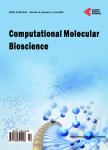Global Genomic Variations of Pathogenic Bacteria <i>Salmonella</i>Reading
Global Genomic Variations of Pathogenic Bacteria <i>Salmonella</i>Reading作者机构:Biotechnology School of Sciences Hong Kong University of Science of Technology Hong Kong China Fuzbien Technology Institute Rockville USA Ernest Mario School of Pharmacy Rutgers University New Brunswick USA College of Letters & Sciences University of California Los Angeles USA Biology Bachelor of Science California Institute of Technology Pasadena USA School of Arts & Sciences Johns Hopkins University Baltimore USA School of Arts & Sciences University of Michigan Ann Arbor USA Youth with Talents Fairfax USA
出 版 物:《Computational Molecular Bioscience》 (计算分子生物学(英文))
年 卷 期:2021年第11卷第3期
页 面:57-68页
主 题:Salmonella Serovar Reading Genome Antimicrobial Resistance Genes Virulence Factors Phylogenomic Tree
摘 要:US Centers for Disease Control and Prevention (CDC) estimates food-borne pathogenic Salmonella bacteria cause about 1.35 million infections, 26,500 hospitalizations, and 420 deaths in the U.S. every year. Outbreaks of multidrug-resistant Salmonella Reading linked mainly to raw turkey products and alfalfa sprouts have accounted for human illness including mortality. Therefore, we downloaded and compared genome sequences of 897 Salmonella Reading isolated from 27 resources in 11 countries at 21 year-points from the National Center for Biotechnology Information database. Isolates were clustered into 10 clades which consisted of 3 major and 7 minor or single node clades. Although 3 major clades included both Europe and American isolates, one clade consisted of 605 North American isolates out of 614 isolates. Evolutionary distance is more related to the continent than the source of isolation. The host source, continent (North America and Europe) and phylogenetic clade were related to the prevalence of isolates encoding Antimicrobial Resistance Genes (ARGs). Prevalence of prophages was greater in bovine and swine isolates than poultry and human isolates and the least prevalence was found in human isolates. Between continents, the prevalence of phage was greater in North Ame- rican isolates than European. The diversity of virulence factors in swine isolates differed from poultry isolate while no difference was found among continents. In conclusion, evolutionary distance is related to isolation host source rather than the continent, and genome features were distinguished by host and cluster. Our genomic analysis implies that Salmonella Reading evolved independently to environments within its lineages.



